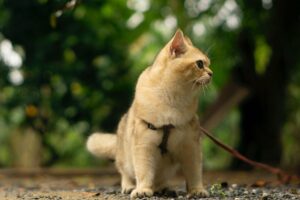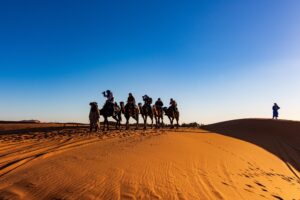Welcome to our blog on animal conservation! Have you ever wondered why wildlife conservation is so crucial? Animals play a vital role in maintaining the balance of nature, and their loss can have catastrophic consequences. Unfortunately, many species are under threat from human activities such as hunting, deforestation, and climate change. In this post, we will explore what wildlife conservation entails, its importance for our planet’s survival, the threats faced by animals today, and how each one of us can contribute towards protecting them. So join us on this journey to learn about the significance of animal conservation and how we can make a difference together!
What is wildlife conservation?
Wildlife conservation refers to the protection and preservation of animal species, their habitats, and ecosystems. The ultimate goal of wildlife conservation is to ensure that these natural resources are used in a sustainable way so that they can continue to benefit both current and future generations.
One important aspect of wildlife conservation involves protecting endangered species from extinction. This requires identifying threats such as habitat loss, poaching, pollution, climate change and taking steps to mitigate those threats. For instance, some organizations work towards creating protected areas where endangered animals can live in safety.
Another important part of wildlife conservation is educating people about the importance of preserving these animals. This includes understanding how ecosystem services provide benefits like fresh air or clean water for human survival as well as maintaining biodiversity which provides us with new medicines or food sources.
In addition to education efforts, there are also many programs focused on breeding rare and endangered animals in captivity for reintroduction into the wild once populations have stabilized. These captive breeding programs help prevent further population decline while allowing researchers to study genetic diversity among different groups.
Wildlife conservation aims at ensuring that our planet’s natural resources remain healthy for future generations by supporting responsible use practices while preventing environmental degradation caused by human activity.
The importance of wildlife conservation
The importance of wildlife conservation cannot be overstated. Wildlife plays a crucial role in maintaining the balance of nature and is essential to our own survival. Many species are integral to food chains, pollination, and nutrient cycling. Without them, ecosystems become unstable and vulnerable to collapse.
Conservation also provides benefits beyond ecological stability. Wildlife tourism generates billions of dollars in revenue each year, creating jobs for local communities while protecting natural habitats. Conserving biodiversity can also lead to new scientific discoveries that could help improve human health or support sustainable development.
But perhaps most importantly, conservation ensures that future generations have the opportunity to experience the wonder and beauty of our planet’s incredible wildlife. We have a responsibility to protect these creatures not just for ourselves but for those who will come after us.
Unfortunately, many species are currently facing threats such as habitat loss, climate change, poaching and trafficking. It is up to all of us – governments, businesses and individuals –to take action against these threats before it’s too late.
Conservation efforts can include habitat restoration projects like reforestation efforts or marine protected areas; anti-poaching patrols; reducing plastic waste which affects both land animals as well as marine life; supporting eco-tourism by visiting sanctuaries or national parks where you can observe animals safely without disturbing their habitats.
By working together on animal conservation we can preserve this precious gift we’ve been given – Earth’s diverse array of amazing wildlife- so that they continue providing invaluable services while inspiring awe for years into the future!
The threats to wildlife today
Wildlife is facing a range of threats that are endangering many species across the globe. One of the biggest threats to wildlife today is habitat loss. With increasing human population and urbanization, natural habitats are being destroyed at an alarming rate.
Another major threat to wildlife comes from poaching and hunting. Animals like elephants, tigers, rhinos, and pangolins are killed for their tusks, horns or scales which fetch high profits in illegal markets. This results in a decline in their numbers every year.
Climate change also poses a significant threat to wildlife as it alters the weather patterns causing extreme temperatures and changing rainfall patterns which disrupts breeding seasons and migration routes of various animals leading to stress on populations.
Moreover, pollution has become another big problem affecting wildlife with ocean plastic pollution killing marine life while air pollution harming birds’ lungs making them more susceptible to infection or disease.
Invasive species introduced by humans have started dominating ecosystems over native plants and animals leading to disruptions of food chains.
It’s our collective responsibility as citizens of this planet to take action against these threats before we lose any more precious creatures from our world forever.
What you can do to help with animal conservation
There are simple ways that we can all contribute to animal conservation efforts. One of the most important things you can do is educate yourself on the topic and spread awareness. Share information about endangered species and their habitats on social media or with friends and family.
Another way to help is by supporting conservation organizations through donations or volunteering your time. Many organizations work tirelessly to protect animals, but they need funding and resources to continue their efforts.
Reduce your carbon footprint by using reusable bags, bottles, and containers. This helps reduce waste in our environment which negatively impacts wildlife.
Make conscious choices when it comes to purchasing products made from animal parts such as ivory or fur. By refusing these products, you are helping decrease demand for them which in turn reduces poaching.
Small actions can go a long way towards protecting animals and their habitats. Join the movement toward animal conservation today!
Conclusion
In today’s world, wildlife conservation has become more critical than ever before. The rapid decline in global biodiversity and the increase in extinction rates call for immediate attention from governments, organizations, and individuals alike.
As we have seen throughout this article, preserving our planet’s natural resources is essential to maintain a healthy ecosystem and ensure future generations can enjoy nature as we do now. It all starts with understanding what wildlife conservation is and why it matters.
We must recognize the threats that endanger animal populations globally while taking an active role in promoting sustainable practices that support both human needs and ecological balance. By working together towards these goals, we can help preserve our planet’s rich diversity of species for years to come.
So let us all take responsibility for protecting the environment by reducing pollution levels, minimizing waste production, supporting ethical tourism practices that benefit local communities while conserving their natural surroundings. Remember: every little step counts! Let us work hand-in-hand towards animal conservation – because when animals thrive, so do we!








